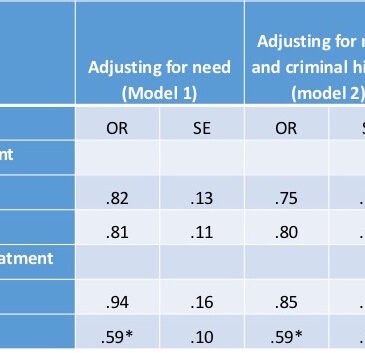When it comes to treatment for addiction, racial disparity is a concerning problem. For example, Hispanics are more likely than non-Hispanics to need treatment for a substance use disorder, but those who need treatment are less likely to receive it. Relative to other population groups, Blacks are more likely to need treatment for using illicit drugs. This week, as we continue our Special Series on Disparities in the Experience and Treatment of Addiction, STASH reviews a study by Ben Cook and Margarita Alegría that examines the relationship between criminal history, socioeconomic status, and racial and ethnic disparities in substance use treatment.
What was the research question?
How do criminal history and socioeconomic status relate to racial and ethnic disparities in substance use treatment?
What did the researchers do?
Cook and Alegría used data from the National Survey on Drug Use and Health (NSDUH) data (2005-2009) to create a sample of white, black, and Latino adults reporting past-year substance abuse or dependence. They examined how race/ethnicity, need for treatment,[1] age, and gender predicted receiving of substance use disorder treatment in the past year. Then they examined how these relationships changed when they controlled for criminal histories and socioeconomic status.
What did they find?
As Table 1 shows, the researchers did not find racial/ethnic disparities in the receipt of any substance use treatment (i.e., treatment from a hospital, rehab center, ER, community mental health center, physician’s office, and jail or prison) until they controlled for criminal history and socioeconomic status. Once they controlled for these variables, the odds of receiving any treatment were 36% lower for blacks and 33% lower for Latinos compared to non-Latino whites. In all models, Latinos were particularly unlikely to receive specialty treatment (i.e., inpatient treatment at a hospital or mental health center or inpatient/outpatient treatment at a rehab facility). After controlling for criminal history and socioeconomic status, the odds of receiving specialty treatment were 54% lower for Latinos and 31% lower for blacks.
Why do these findings matter?
Across all respondents, only about 10% of those who needed substance use treatment received it. This is a major problem for the United States health care system. Blacks and Latinos were particularly underserved, but only when the researchers controlled for criminal history and socioeconomic status. This finding is important because it indicates that many blacks and Latinos who do receive treatment are receiving it within the criminal justice system—which is often perceived to be “coercive and dehumanizing”—and within safety net centers located in disadvantaged neighborhoods. Everyone—even poor people who are involved in the criminal justice system—deserves access to effective treatment. The Police Assisted Addiction and Recovery Initiative (PAARI) is working to break this cycle by increasing the number of police departments across the country who are diverting those with a substance use disorder away from the criminal justice system and into community treatment.

Figure. Adjusted odds ratios for substance use treatment and specialty treatment among black and Latinos compared to white non-Latinos (adapted from Cook & Alegría, 2015) *Odds ratios marked with an asterisks are statistically significant. Click image to enlarge.
Every study has limitations. What were the limitations in this study?
Because the researchers pooled data from 5 years of the NSDUH, this study does not speak to changes in health disparities over time. In addition, the National Survey on Drug Use and Health does not include questions about the severity of the substance use disorder or the quality of the treatment received. Both pieces of information would help us further understand the depths of the racial and ethnic disparities in substance use treatment in the US.
For more information:
Find the original publication abstract and free full text of the article here.
For more information on minority health and what the Department of Health and Human Services is doing to address racial and ethnic health disparities visit their website.
For more information about work being done at The Center for Multicultural Mental Health Research, visit their website.
— John H Kleschinsky
What do you think? Please use the comment link below to provide feedback on this article.
________________
[1] Need for treatment variables including having a diagnosis of dependence (rather than abuse), having functional limitations at work, having severe psychological distress or a major depressive episode, and having non-optimal self-rated health.





Mary May 25, 2016
This was supposed to be a study about gambling? I did not read anything about gambling regarding various ethenticities in this article at all?
Heather Gray May 26, 2016
Hi Mary,
When we emailed subscribers about this week’s post from The WAGER (The WAGER, Vol. 21(6) – What did you expect? Ethnic differences in gambling expectancies), we accidentally included a link to this post. Please go here to see The WAGER describing ethnic differences in gambling expectancies: http://www.basisonline.org/2016/05/the-wager-vol-216-what-did-you-expect-ethnic-differences-in-gambling-expectancies.html.
Thanks for reading The BASIS, and sorry for the confusion.